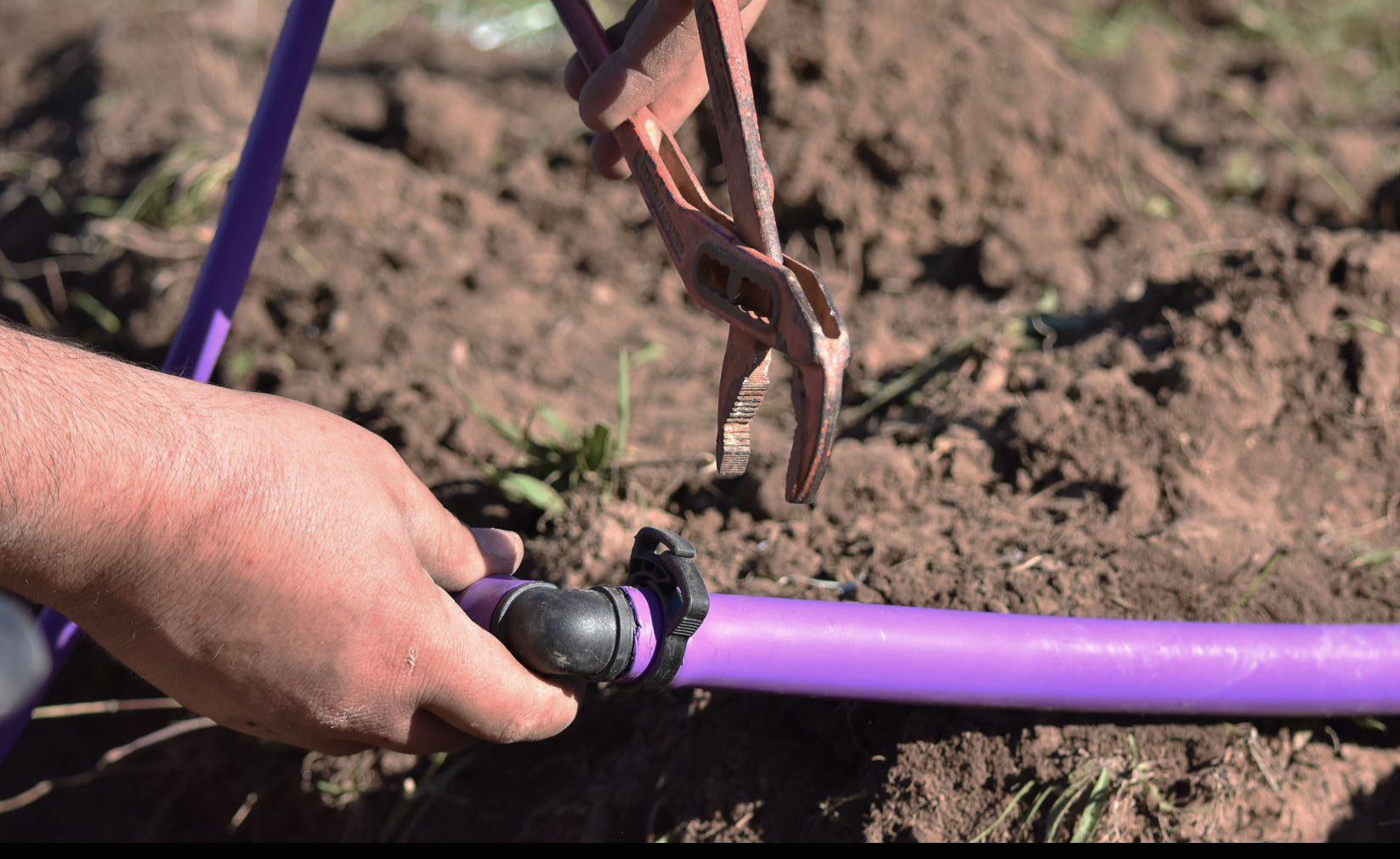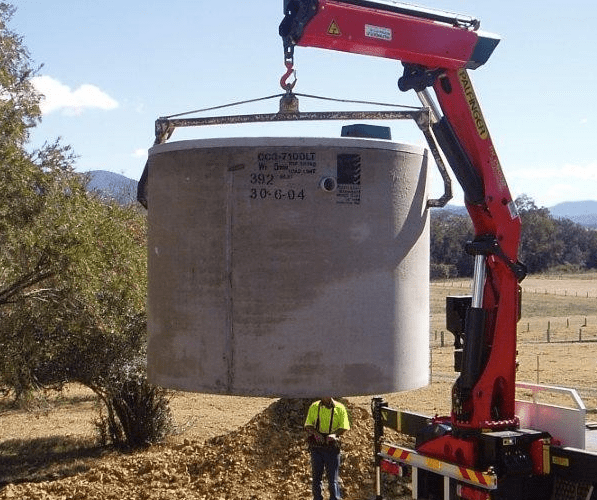When your house or property is not connected to a council/municipal sewer, on-site wastewater systems like Septic Tanks or Aerated Wastewater Treatment Systems are often installed to treat the sewage and blackwater generated.
The latter and most popular of the two options (Aerated Wastewater Treatment Systems or AWTS) receives all wastewater from the premises, including the kitchen, toilet, shower and laundry, and quietly and efficiently recycles all your household wastewater into clean, clear and odourless water suitable for irrigation on your garden and lawns via sub-surface irrigation.
Subsurface irrigation is the best method of disposal of the cleaned and disinfected wastewater for most local governing authorities. The considerable benefit of subsurface irrigation is that there is no contact with the treated effluent for humans, pets or livestock.
It works by the AWTS being connected to the sub-surface irrigation, allowing the secondary/aerated treated effluent to be dispersed via multiple polyethylene drip lines, covering a targeted area (often called a leach field). Subsurface irrigation evenly disperses the treated effluent underground (after disinfection by an Advanced Secondary Treatment System) straight to the biologically active layer of the soil. The soil consumes residual bacteria or organic matter, and vegetation such as grass will absorb the nutrients.
Sub-Surface Irrigation Being Installed:
The sub-surface poly drip lines are buried in a grid between 100mm – 150mm below the ground, where inserted emitters disperse the wastewater evenly through the irrigation network.
The constant dispersal of the water means there is no run-off or pooling on the top of the leach field, reducing human contact and contamination of waterways.
When considering sub-surface irrigation as part of your wastewater solution, you will need to consider your soil type, site conditions, size of the leach field and the intended application of the area. The grass of the leach field should be maintained short to allow good airflow and for the sunlight to dry excess dampness.
Planting on septic drain fields and around your septic system and leach field is not only permissible but advisable. Plants will prevent erosion and suck up some of the excess moisture from the drain field. At the very least, grow a Tall Fescue grass or Kentucky Bluegrass. Tall Fescue and Kentucky Bluegrass are often mixed and can handle high water levels.
Read our full article: What Plants Can You Plant Around A Septic System?
Large areas (over 250 to 300 linear metres of drip line) are usually split into equal-sized zones. The zones are controlled automatically through your AWTS system using a water indexing valve that spreads the treated wastewater to a different zone every time the pump operates.
The Dangers Of Poor Irrigation
A good irrigation system is necessary on any property.
Whether you’re building a new home or figuring out ways to save water and alleviate water damage, it’s important to know just how significant the impact of poor irrigation can be on your home. All homeowners should consider installing an excellent quality irrigation system.
Below are some of the ramifications of having poor irrigation:
Damage to the Surrounding Concrete and Footpaths
Uncontrolled water from poor irrigation can eventually gather underneath or on top of concrete, causing it to become both aesthetically and structurally damaged. Paths in your garden, driveways, and even footpaths surrounding your home are at risk if subjected to continuous water build-up.
Higher Risk of Erosion
Excess water in your garden can cause topsoil runoff into surrounding drains. Not only does this significantly impact the environment, but it also means the root system of your lawn and plants is more likely to sustain damage due to losing the nutrients and protection that topsoil gives them.
Wood Rot and Termites
Poor irrigation may result in rotting wood around your property or home. Termites absolutely love rotting, moist wood so if you’ve got irrigation leaks around wood, you need to think fast and resolve the problem before it causes major structural damage.
Increase in Pests
It’s not just termites that might invade your property if you have poor irrigation. There’s also the chance that you’ll have an increase in spiders and rodents on your property due to the increased moisture.
Dryness
Contrary to all of the above, if you have an irrigation system that isn’t leaking but is not releasing enough or any water, then you are basically running with no irrigation at all. This can leave your property dry, kill plants and trees in your garden, and damage your lawn.
Garden Master provides environmentally friendly Septic Solutions and Subsurface Irrigation services for domestic and commercial properties across NSW, ACT and Victoria.
Garden Master offers only the highest quality residential septic tanks, secondary treatment systems (STS), and commercial-grade wastewater treatment systems. We have septic treatment systems with subsurface irrigation suitable for domestic homes, cabins, and commercial industries. We pride ourselves on customer service, meaning you won’t just get a one-size-fits-all approach with us but rather a tailored solution to suit your exact wastewater needs. With over 30 years of experience, you can rely on Garden Master to provide the best wastewater treatment products and services.
If you’re unsure what septic system would suit your property, check out our article, Septic Tank Buying Guide or get in touch for some friendly advice.





